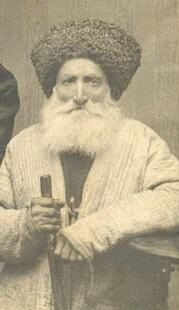This articleneeds additional citations forverification.(December 2009) |
DarginsorDargwa(Dargwa:дарганти,darganti) are aNortheast Caucasiannative ethnic group originating in theNorth Caucasus,and who make up the second largest ethnic group in the North Caucasian republic ofDagestan.They speak the variousDargin languages.
 Dargin flag | |
 A Dargin man,c.late 1800s | |
| Total population | |
| 700,000 (est.) | |
| Regions with significant populations | |
| 626,601[1] | |
| Levashinsky District | 70,704 |
| Akushinsky District | 53,558 |
| Dakhadayevsky District | 36,709 |
| Kaytagsky District | 31,368 |
| Sergokalinsky District | 27,133 |
| 1,610[2] | |
| Languages | |
| Dargin languages | |
| Religion | |
| Majority:Sunni IslamMinority:Shia Islam[3]
| |
| Related ethnic groups | |
| Adyghe,Circassians,Chechens,Avars | |

According to the 2021 Census, Dargins make up 16.6% of the population of Dagestan, with 521,381 people.[1]They are concentrated in theKaytagsky District,Dakhadayevsky District,Levashinsky District,Akushinsky DistrictandSergokalinsky Districts.
The Dargins have lived in their present-day location for many centuries. They formed the state of Kaitag in the Middle Ages and Renaissance until Russian conquest. Today, the Dargins are one of the most numerous ethnic groups inDagestan(an amalgamation of many of the historical peoples in the region), the second most numerous afterAvars.
Origin
editRegarding the origin of Northeast Caucasian peoples, two hypotheses were put forward — the autochthonous one (developed in the works of M.G. Abdushelishvili, V. P. Alekseev, etc.), arguing for an indigenous origin and the migration one (proposed by G. F. Debets), arguing for an exogenous origin.
Genetics
editAccording to genetic studie in 2023, the following haplogroups are found to predominate among Dargins (Dargwa, Kaitaks, Kubachis):[4]
- J1(81%)
- R1a(11%)
- R1b(2%)
Culture
editThe infrastructure and architecture of the Dargin people was extremely well developed compared to their neighbors throughout history. The folk masters of this art displayed a very high level of achievement in building and ornamenting towers and fortresses, building the ensembles of buildings, mosques, bridges, and building irrigation constructions at springs and wells. The artistry of the Dargins is clearly shown in their decorative and applied art: in the creations of the Kubachi silversmiths; in the work of stonecutters, toolmakers, woodworkers, and ceramic and tile workers; in weaving, leatherwork, and furwork; and in spirited folk dance and vocal music. Dargins are known for theirKaitag textiles,fromKaytagsky District.The spiritual and religious center of Dargin nation wasAkusha-Dargo.The head judicial court of all Dargins was also in Akusha. Other famous Dargin cities wereLevashi,Mekegi,KubachiandKadar.
Prior to Russia's annexation of Dargi regions, Dargi medicine was a combination of folk and Eastern medicine. Folk healers (khakim) achieved considerable success in the treatment of wounds, bruises, broken bones, and dislocations and even intrephination;they were also skilled inphytotherapyand treatment of various internal diseases. The best-known healers were Murtuzali Haji of Butri, who studied medicine in Cairo for five years, worked with the Russian surgeon N. I. Pirogov, and was given a set of surgical instruments by him; Taimaz of Urakhi; Mohammed Haji of Khajalmakhi; Davud Haji of Akusha'; Alisultan Haji of Urkarakh; and others. Medical service was instituted only in 1894, with nine doctors and twelve nurses for all of Dagestan, a ratio of one medical practitioner to 60,000 persons. Now there is a paramedical station in every settled place, or a regional doctor, or a regional, district, or interdistrict hospital and a first-aid service with its own transport, including air transport.
Religion
editDargins are mostlySunniMuslims of theShafi'ischool.[5]however a significant minority adhere to Shi’a Islam.[citation needed]
Notable Dargins
edit- Taimas Gubdensky,Dargin warrior from the Caucasian War.
- Abakar-Hadji Akushinsky,Dargin warrior from the Caucasian War.
- Gasan Umalatov,mixed martial artist, 2008 World champion in Kick Jitsu, two-time World champion in Universal Combat (2010 & 2011) and three-time world champion in Hand-to-Hand combat.
- Hasbulla,internet personality
- Magomed-Ali Magomedov,ex-president of Dagestan.
- Magomedsalam Magomedov,ex-president of Dagestan.
- Magomed-Shapi Suleymanov,footballer.
- Shahbulat Shamhalaev,retired mixed martial artist and kickboxer.
- Magomedrasul Medzhidov,olympic and professional boxer.
- Ali Isaev,mixed martial artist and former amateur wrestler.
- Islam Umalatov, mixed martial artist and two-time World champion in grappling.
- Magomed Umalatov,mixed martial artist fighting inPFLand formerGFCwelterweight champion.[6][7]
- Gadzhi Rabadanov,mixed martial artist, current fighting in theLightweightdivision ofBellator MMA.
- Timur Khizriev,mixed martial artist, current fighting in theFeatherweightdivision of theProfessional Fighters League(PFL).
References
edit- ^abc"Russian Census of 2021".Archivedfrom the original on 2022-12-31.Retrieved2023-05-28.(in Russian)
- ^"About number and composition population of Ukraine by data All-Ukrainian census of the population 2001".Ukraine Census 2001.State Statistics Committee of Ukraine. Archived fromthe originalon 17 December 2011.Retrieved17 January2012.
- ^"Dargins".19 June 2015.
- ^Agdzhoyan, Anastasia; Iskandarov, Nasib; Ponomarev, Georgy; Pylev, Vladimir; Koshel, Sergey; Salaev, Vugar; Pocheshkhova, Elvira; Kagazezheva, Zhaneta; Balanovska, Elena (2023-09-09)."Origins of East Caucasus Gene Pool: Contributions of Autochthonous Bronze Age Populations and Migrations from West Asia Estimated from Y-Chromosome Data".Genes.14(9): 1780.doi:10.3390/genes14091780.ISSN2073-4425.PMC10530682.PMID37761920.
- ^Османов М. О., Сергеева Г. А. и др. (2020).ДАРГИНЦЫ.Большая российская энциклопедия. Электронная версия.
- ^Ovsyannikov, Vitaly (2019-09-02)."Российская битва в Чикаго. Даргинец одолел сибиряка и остался непобедимым".Советский спорт(in Russian).Retrieved2024-05-24.
- ^Ovsyannikov, Vitaly (2019-09-02)."Астраханцы стали чемпионами по смешанным единоборствам".myseldon.com(in Russian).Retrieved2024-05-29.